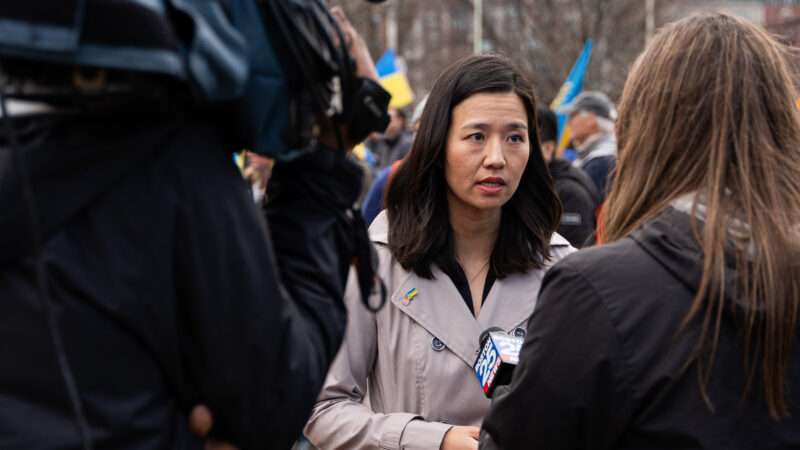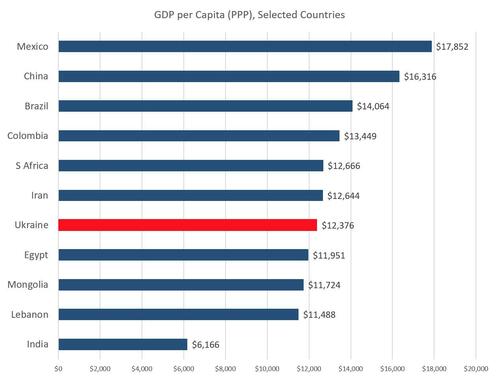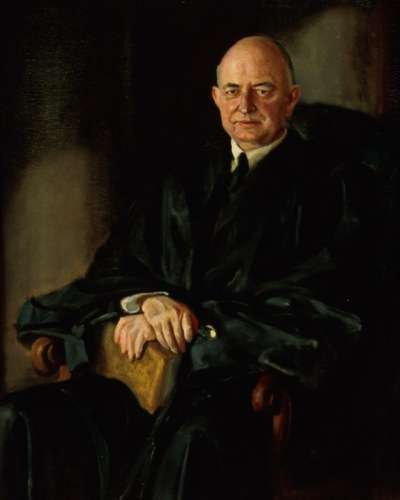In July 2014, five New York City police officers approached Eric Garner on a Staten Island sidewalk and accused him of illegally selling “loosies”—individual cigarettes without a tax stamp. Garner resisted handcuffs, and a scuffle ensued. Officer Daniel Pantaleo placed Garner in a prohibited chokehold while pushing him down to the ground face-first. After protesting 11 times that he could not breathe, Garner lost consciousness and died within the hour, sparking national outrage and raising awareness of the Black Lives Matter movement.
American policy regarding tobacco-based products has become considerably more restrictive since Garner’s death, putting illicit market participants on a collision course with law enforcement. Even as the country finally begins to acknowledge the disastrous consequences of the war on drugs, government officials are increasingly taking a prohibitive approach to nicotine.
In two separate June 2021 incidents captured on video in Ocean City, Maryland, teenagers caught vaping on the boardwalk in violation of a local ordinance were manhandled by police. One was kneed in the chest, while two others were tased. That same month, Massachusetts Attorney General Maura Healey announced the breakup of a distribution ring for marijuana, flavored tobacco, and flavored e-cigarettes. The main suspect, Samuel Habib, faces up to five years in prison for tax evasion. “Flavored tobacco and vaping products are dangerous, addictive and particularly appealing to young people,” Healey explained in a statement. “Which is why we’ve banned the sale of them in Massachusetts.”
Tobacco is still legal for adults to purchase and consume in the United States. But public policy regarding nicotine delivery systems is shifting from taxation and regulation to explicit prohibition of many products. Some jurisdictions already have banned menthol cigarettes, and the Food and Drug Administration (FDA) is likely to announce a similar ban at the federal level this spring. Local restrictions on e-cigarettes likewise provide a preview of what will happen nationwide if the FDA continues to regulate vaping products in a way that threatens to wipe out nearly the entire industry. The FDA is also mulling restrictions on the nicotine content of cigarettes that would be tantamount to prohibition.
As tobacco, e-cigarettes, and e-liquids transition from legal to illicit, law enforcement agencies will more aggressively interfere with production, distribution, retail sales, and in some cases even individual use. Every such interaction carries with it the possibility of freedom lost, perhaps violently. There is a real risk that American tobacco policy will open a regressive new front in the war on drugs, just as the previous crackdown on psychoactive substances begins to wind down.
From Prohibition to Regulation and Back Again
Perhaps it’s difficult to imagine that tobacco could be treated like an illegal drug in the country that gave the world Joe Camel and the Marlboro Man. But it has happened before.
During the Progressive Era around the turn of the 20th century, cigarettes were targeted nearly as vociferously as alcohol. The Anti-Saloon League and Carrie Nation had their counterparts in the Anti-Cigarette League and the equally fervent Lucy Page Gaston. Although anti-smoking forces never matched the temperance movement’s achievement of national prohibition, they were nevertheless a political force to be reckoned with.
“Between 1890 and 1930, fifteen states enacted laws to ban [the] sale, manufacture, possession, or use [of cigarettes], and no fewer than twenty-two other states and territories considered such legislation,” historian Cassandra Tate notes in her 1999 book Cigarette Wars. “By 1920, minors could legally buy cigarettes only in Virginia and Rhode Island. Many municipalities imposed further restrictions, from making it illegal for women to smoke in public, to outlawing smoking in or around school buildings, to banning certain kinds of advertising. Cigarette smokers faced discrimination in the courtroom, in the workplace, and in daily life. In 1904, for example, a New York judge ordered a woman to jail for thirty days for smoking in front of her children.”
As with alcohol, these prohibitions did not last. Lacking the will for consistent enforcement, governments applied the laws rarely and selectively. The rising tide of cigarettes, driven largely by soldiers returning from World War I and the association of smoking with women’s independence, proved impossible to stem. By the end of the 1920s, states generally had decided it was easier to tax and regulate cigarettes than to ban them.
The anti-cigarette crusade fizzled until the 1950s, when researchers definitively tied smoking to lung cancer and other diseases, culminating in the landmark surgeon general’s report of 1964. The updated anti-smoking movement, now grounded on a firmer medical foundation, advanced regulatory policies to discourage and denormalize smoking: warning labels on cigarette packages, restrictions on marketing, educational efforts, excise taxes, and location-specific bans on lighting up.
American smoking rates declined steadily from their mid-century peak. Today about 14 percent of U.S. adults smoke cigarettes, down from nearly half in the 1950s. But for half a century, as taxes rose and smoking-friendly venues disappeared, the product itself remained more or less physically unchanged and legally available to adults.
That began to change with the passage of the 2009 Family Smoking Prevention and Tobacco Control Act, which for the first time gave the FDA regulatory authority over tobacco products. The law also banned flavored cigarettes, with the notable exception of menthol, which today accounts for more than a third of the U.S. cigarette market. Since the FDA has long considered extending the flavor ban to menthol and theoretically could reduce the amount of allowable nicotine to insignificance, the industry has spent much of the time since preparing for the hammer to fall.
So far it has not. Niche products such as clove cigarettes, which were banned by the Tobacco Control Act, simply transitioned to the less regulated category of “little cigars” by changing their wrappers. The few products the FDA has ordered off the market thus far have tended to be of little commercial significance. The agency boasted in 2014, for example, that it had banned four of Jash International’s tobacco products—a type of small cigar known as “bidis” that are popular in India and southeast Asia but very niche in the United States. As it turned out, the company had stopped exporting them to the U.S. years earlier.
In a 10-year retrospective on the Tobacco Control Act titled “The Faltering Promise of FDA Tobacco Regulation,” Ohio State University law professor Micah Berman lamented that anti-smoking activists had been unrealistically optimistic about what the agency would accomplish. Tobacco companies—specifically Altria, which supported the 2009 law—had the more accurate assessment, anticipating that the FDA would insulate cigarettes from competition and keep them on the market as legitimate, regulated products. Indeed, the law itself stresses that one of its purposes is to “continue to permit the sale of tobacco products to adults.”
But the wheels of the federal bureaucracy grind slowly. Mitch Zeller, outgoing director of the FDA’s Center for Tobacco Products, has indicated that rules restricting cigar flavors and prohibiting menthol in cigarettes likely will be published in spring 2022. In the meantime, state and local governments are pursuing their own restrictions, including a 2020 California law banning menthol cigarettes, which is on hold pending the outcome of a ballot initiative this November.
Existing menthol bans in Massachusetts and the District of Columbia already cross the line from regulation to prohibition. A federal ban would take a product favored by about 10 million American smokers off the legal market. A federal nicotine cap likewise would amount to de facto prohibition, restricting the drug that makes cigarettes appealing in the first place, equivalent to allowing the sale of only non-alcoholic beer or decaffeinated coffee. For the first time since the Progressive Era, legal and widely used tobacco products are on a path to contraband status. So is a much less hazardous competitor.
The Road to E-Cigarette Prohibition
The appeal of prohibition is understandable. Cigarettes arguably are the most destructive drug in the world, causing an estimated 440,000 premature deaths each year in the U.S. and more than 7 million globally. It is tempting to wish them away with the passage of a law or regulation. Instead, America is stuck in an illiberal, illogical situation: While cigarettes remain widely legal, nicotine vaping products, which pose much smaller health risks, generally remain on the market only thanks to the FDA’s limited resources and enforcement discretion.
After e-cigarettes first appeared in the U.S. around 2007, the FDA tried to ban all imports, deeming the product an unapproved “drug/device combination.” A federal appeals court blocked enforcement of that 2009 order. Since e-cigarettes were not marketed for their therapeutic benefits, the U.S. Court of Appeals for the District of Columbia Circuit ruled in 2010 that the FDA would have to regulate them as tobacco products rather than medical devices. The resulting delay bought the vaping market time to innovate, expand, and become entrenched in the U.S. Today around 10 million American adults vape nicotine, served by thousands of vape shops.
It took the FDA until August 2016 to issue a “deeming” rule declaring e-cigarettes to be under its purview. Although the agency concedes that vaping is a safer alternative to smoking, the regulatory process is more burdensome for vapor products than for cigarettes. That’s because the Tobacco Control Act grandfathered all products that were on the market as of 2007, meaning that conventional cigarettes were left essentially untouched. Since the e-cigarette market barely existed in 2007, vapor products must meet a much stricter standard of “pre-market” review. Manufacturers have to convince the FDA that sale of their products is “appropriate for the protection of public health.”
So far just one product—R. J. Reynolds Vapor Company’s Vuse Solo, along with two tobacco-flavored cartridges for that device—has met that test. All the rest, according to the FDA, are “marketed unlawfully” and “subject to enforcement action at the FDA’s discretion.” Of the 2 million or so applications that the agency had received by the September 2020 deadline, it has rejected 1 million, often with what appeared to be a very cursory review.
Most health authorities, including the FDA, acknowledge that vaping is substantially safer than smoking and that smokers would benefit from switching. Credible estimates suggest that millions of premature deaths could be prevented by a widespread transition from combustion to vapor. But because of the products’ novelty and rapid adoption, especially among teenagers, e-cigarettes have been subjected to hysterical media coverage and restrictive legislation far out of proportion to their probable risks. Much of the public now mistakenly thinks vaping is just as dangerous as smoking—or even more dangerous.
In 2019, a rash of lung injuries associated with vaping produced a season of scary headlines, parental panic, and legal crackdowns. Although the outbreak was soon traced to contaminants in the mostly illicit market for cannabis vapor products, opponents of nicotine vaping took advantage of the situation to advance a prohibitionist agenda. In the aftermath, with concern about youth vaping at its peak, the FDA banned all flavors aside from menthol and tobacco in cartridge-based vaping products, such as the popular Juul. Some local governments banned menthol vapes as well. San Francisco banned the sale of all flavored e-cigarettes, along with vaping products that had not received FDA approval—which, at the time, was all of them.
The most extreme political response came from Gov. Gretchen Whitmer (D–Mich.), who issued an emergency order that prohibited not only the sale of flavored e-cigarettes but also their possession. Anyone found with four or more flavored e-cigarettes faced up to six months in jail. Vape shop owners successfully sought relief from Michigan courts, which ruled that Whitmer had failed to provide evidence of an emergency that would justify deviating from the usual rule-making process. But the fact that Whitmer attempted such an order demonstrates that the threat of carceral responses to vaping should be taken seriously.
The proliferation of state and local bans on e-cigarettes echoes the Progressive Era crusade against cigarettes, which was similarly animated by moral alarmism mixed with genuine concern about children’s welfare. The tragic difference between then and now is that contemporary bans often target safer products while leaving access to cigarettes intact, turning harm reduction on its head.
A court order notionally required the FDA to complete its review of vaping product applications by September 2021, a deadline the agency has thus far managed to miss without consequence. One of the biggest unresolved questions is whether the FDA will approve the flavors that adult vapers overwhelmingly favor. Industry experts plausibly speculate that the agency will effectively ban all non-tobacco flavors, with a possible exception for menthol. Prior to widespread restrictions, surveys of adult vapers—including many who had completely stopped smoking—revealed that they preferred flavors other than the ones the FDA seems inclined to allow.
Absent a dramatic reversal at the FDA, all but a few vaping businesses will be wiped out. Consumers will no longer be able to visit independent vape shops to buy customizable components for “open systems” or choose from a wide variety of flavors and nicotine concentrations. While a handful of products—probably closed systems like Vuse Solo in tobacco and perhaps menthol flavors—are expected to remain on the market, federal prohibition is likely the new reality for nearly all vapor products in the U.S.
Prohibition Tipping Point
The prohibition of alcohol in the U.S. was accomplished by the 18th Amendment and the accompanying National Prohibition Act, popularly known as the Volstead Act. Federal drug prohibition, which began with “tax” laws enacted in 1914 and 1937, was codified in the 1970 Controlled Substances Act. The criminalization of tobacco has been a more gradual process, accomplished through a combination of federal regulation and state or local laws. Taken individually, these restrictions may seem of minor consequence. Yet their cumulative effect could well mimic the failures of prohibitions past: illicit trade, organized crime, invasive policing, and incarceration.
Five states—California, Massachusetts, New Jersey, New York, and Rhode Island—have banned the sale of flavored e-cigarettes. More than 300 local jurisdictions have passed additional restrictions on flavored tobacco or nicotine products. Beverly Hills in 2019 banned the sale of all tobacco and e-cigarette products, with exceptions made for its posh hotels and cigar lounges. If the history of smoking regulation is any guide, what begins in California may soon spread to other states.
These restrictions already are combining to form large gray and black markets, a process that will escalate dramatically if the FDA continues on its current course. “I think that people in tobacco control, including in the harm reduction community, have become kind of comfortable with how to live with an illicit market,” says Ethan Nadelmann, founder and former executive director of the Drug Policy Alliance. “But I think that they’re not conscious that there can be a tipping point when you keep pushing more and more of the market into the underground, into the prohibitionist market, where it’s entirely unregulated. The more intensive the prohibitions, the higher the profits go.”
Concerns about the policing of illicit markets have led groups such as the American Civil Liberties Union, the Law Enforcement Action Partnership, and the National Association of Criminal Defense Lawyers to oppose proposed bans on menthol cigarettes, which are consumed disproportionately by black smokers. New restrictions on what people choose to put into their bodies are clearly inconsistent with the progressive aim of reducing police conflict with minority communities.
Advocates of restrictions argue that smokers will welcome the loss of legal access to cigarettes as a release from a harmful addiction they are desperate to kick. Stanford historian Robert N. Proctor is one of the most ardent advocates of tobacco prohibition, which he prefers to call abolition. “It is no longer fashionable to talk about ‘magic bullets’ in medicine,” he writes in his 2012 book Golden Holocaust, “but here we really do have a magic bullet, requiring (in theory) nothing more than the stroke of a pen.”
Proctor dismisses comparisons to alcohol prohibition. “Alcohol and tobacco are very different,” he argues. “The most important difference is that alcohol, unlike nicotine, is a recreational drug. Many people like to drink, and most do so responsibly with little or no harm to their health.…They are not addicts, which means that apart from a tiny minority of abusers, they choose to drink. That is the main reason Prohibition failed: people like to drink and can usually do so responsibly and in moderation. Tobacco presents us with a very different situation. Nicotine is not a recreational drug. Most people who smoke wish they didn’t, and most smokers (90 percent) regret ever having started.…Most smokers do not enjoy it; they smoke because it relieves their cravings, and they don’t feel they can endure the pain required to quit.”
Proctor’s assumptions are questionable. It is more accurate to say that smoking is both addictive and enjoyable, and that regret is tied to recognition of its potentially deadly health effects. If smoking were solely about relieving nicotine cravings, pharmaceutical substitutes such as patches and gums would be far more useful for helping people quit. One obvious explanation for why e-cigarettes outperform nicotine replacement therapies in randomized controlled trials is that they better replicate the enjoyable aspects of smoking.
More to the point, far from being a magic bullet, tobacco prohibition has been tried and has failed repeatedly throughout history, even when backed by penalties as severe as execution. Most recently, it failed even in Bhutan, the tiny South Asian country that had long served as the contemporary model case for national prohibition. The COVID-19 pandemic forced the Bhutanese government, which had banned tobacco products in 2010, to acknowledge that prohibition had created a robust cross-border illicit trade, exposing the country to infection. It repealed the policy in 2020, citing concerns about virus transmission.
A Peaceful Prohibition?
“A custome lothsome to the eye, hatefull to the Nose, harmefull to the braine, dangerous to the Lungs, and in the blacke stinking fume thereof, neerest resembling the horrible Stigian smoke of the pit that is bottomelesse.” That was how King James I of England described smoking in his 1604 treatise A Counterblaste to Tobacco, his famous tract encouraging the English to abstain from smoking. Two decades later, having thoroughly failed to persuade, he instead instituted a royal import monopoly to profit from the crop. The king’s frustrations have been shared by rulers and reformers ever since: the dream of a smoke-free society just out of reach, their noble aims frustrated by people’s stubborn determination to keep on smoking.
Contemporary advocates of tobacco prohibition hope the modern regulatory state will succeed where tyrants failed. Perhaps they are right, and we really can eliminate tobacco or nicotine use with the stroke of a pen.
But let’s also consider that they may be wrong. Experience suggests the situation will be complicated. It’s one thing to regulate highly visible companies such as Philip Morris in Richmond or Juul in San Francisco. It’s quite another to exercise control over manufacturers of “illicit whites”—cigarettes produced outside the formal system and in disregard of government regulations—in Belarus and Yunxiao County, China; importers supplying a diffuse web of disposable vaping products in Los Angeles; or shady guys hawking flavored vapes on Snapchat.
The federal government seems poised to ban menthol in cigarettes and to prohibit nearly all of the products that -currently make up the vaping market. The FDA may also mandate near-zero levels of nicotine in combustible tobacco. None of these policies has been fully implemented yet, at least at the federal level. But they remain live possibilities among -regulators and progressive policy advocates. Each of them would amount to a modern experiment with prohibition. Once such policies are enacted, authorities will face difficult trade-offs between strict enforcement and liberal concerns about policing and criminal justice.
The optimistic scenario is that the bans will operate merely as commercial regulations, limiting interactions with the state to manufacturers and retailers. A more realistic scenario is that low-level suppliers and consumers will be ensnared in the criminal justice system. When unauthorized dealers step into the void left by federal bans, they will be subject to criminal penalties.
“All states treat unlicensed sale of tobacco products as a crime—usually as a felony punishable by imprisonment,” the American Civil Liberties Union and two dozen other concerned organizations noted last year in a letter to Secretary of Health and Human Services Xavier Becerra and FDA acting Commissioner Janet Woodcock. “In the end, tobacco policy will no longer be the responsibility of regulators regulating, but police policing. Our experience with alcohol, opioid, and cannabis prohibition teaches us that that is a policy disaster waiting to happen, with Black and other communities of color bearing the brunt.”
Tight restrictions on tobacco are, as Nadelmann notes, criminogenic: By forcing buyers and suppliers into illicit markets, they create crime where none previously existed. Even if possession of tobacco products remains legal, many small-time dealers likely will be drawn to the illicit trade. That will expose them to harassment by cops, potentially violent confrontations, arrest, and incarceration. Judging from what has happened with the drug war, crackdowns on “loosie” sales, and enforcement of outdoor smoking and vaping bans, the impact of the new restrictions will land most heavily on racial minorities and people of modest means.
Richard Marianos, a former assistant director at the Bureau of Alcohol, Tobacco, Firearms, and Explosives who now teaches at Georgetown University, warns that these policies are also likely to increase nonstate violence. Illicit sellers who carry large amounts of valuable contraband and rely heavily on cash become targets. “It is forcing more tobacco traffickers to carry guns now because of the extreme amount of cash that is being transacted,” Marianos says. The profits from black market sales will attract gangs and other criminal organizations. These problems already are evident due to high taxes, and prohibitions will exacerbate them.
Such challenges are predictable and familiar. Yet advocates of tobacco and nicotine bans are often activists and politicians who are otherwise keenly aware of prohibitionist failures. “You do have Mitt Romney and Republican governors and a whole range of others,” notes Nadelmann. “But by and large, a lot of the energy has come out of the progressive end. That’s all the more galling to me, because many of these politicians were my allies on legalizing medical marijuana, marijuana legalization, safe injection, reducing incarceration, sentencing, all that sort of stuff. But somehow it’s like they’ve abandoned all those principles.”
Tobacco in a Free Society
“People smoke for the nicotine but they die from the tar,” tobacco researcher Michael Russell famously observed in 1976. At the time, there were no delivery mechanisms for nicotine that could viably compete with combustible cigarettes. That is no longer the case. Contemporary products exist on a continuum of risk, with options like e-cigarettes, Swedish snus, and heat-not-burn tobacco offering promising alternatives with the potential to be far less dangerous than smoking while still appealing to consumers.
The abstinence-only mindset in the U.S. has led to misinformation promoted by alarmist media coverage, regulations that prohibit companies from conveying truthful health information, and in some cases outright product bans. The U.S. should learn from the experiences of places like Scandinavia, where safer products are rapidly displacing smoked tobacco, and England, where health services actively promote vaping as a cessation tool. America has barely tapped the potential of harm reduction as a strategy for preventing smoking-related deaths.
Russell was not entirely correct, however. People smoke for more than just the nicotine. Many people genuinely enjoy smoking or vaping, and the government would infringe on their freedom by taking that choice away from them. Whatever the merits of their decision, we should question whether the state is justified to intervene by force.
Prohibitionist tobacco and nicotine policies expose a tension between the progressive desire to stop people from taking up a deadly habit and liberal concern for protecting individual choice and preventing abusive policing and punitive incarceration. The alternative—embracing harm reduction while respecting adult autonomy—can lead to a world in which far fewer people die from smoking, but it will not offer the satisfaction of destroying the tobacco industry or ending smoking forever. Experience with past prohibitions of tobacco, alcohol, and other drugs suggests that coercive efforts to achieve those goals will fail, creating substantial misery in the attempt.
The post Welcome to the Nicotine Prohibition Era appeared first on Reason.com.
from Latest https://ift.tt/d4o5rJ1
via IFTTT









